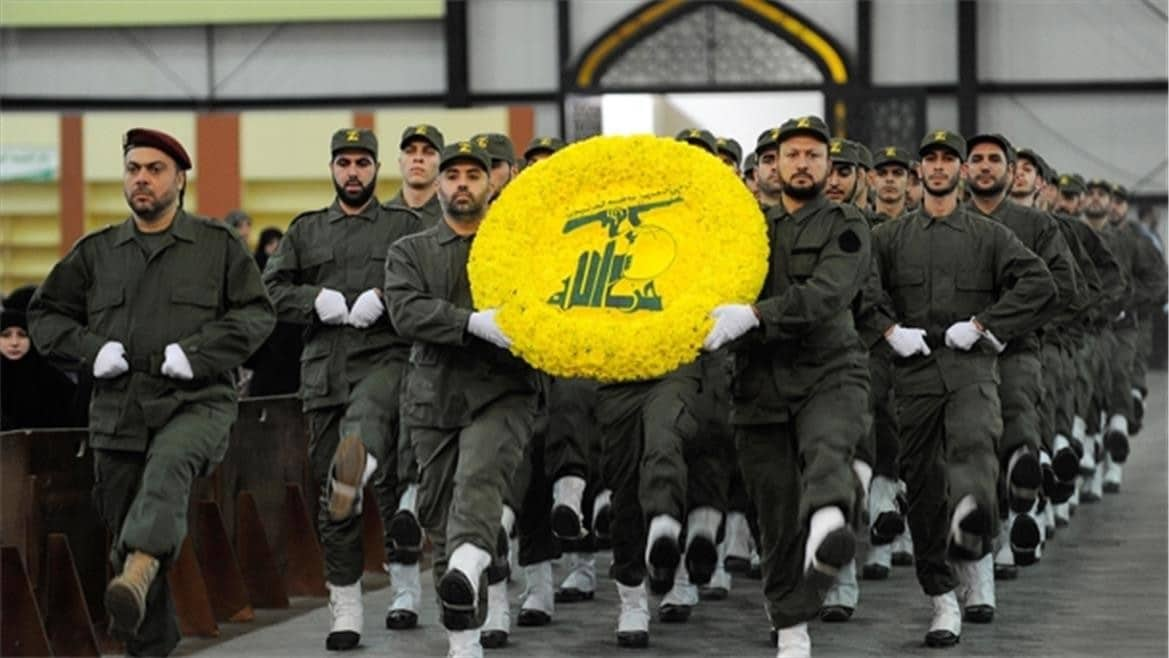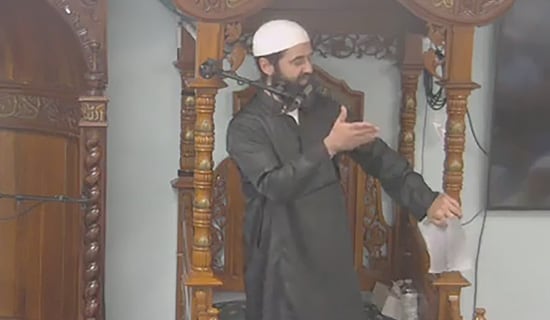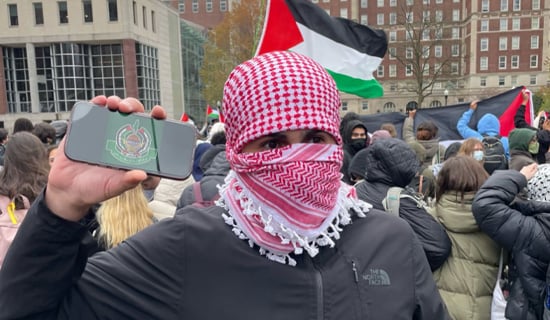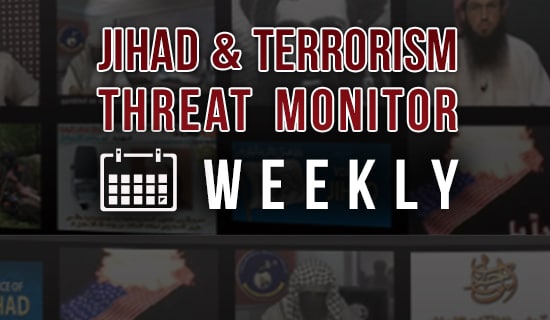A May 18, 2017 report in the Lebanese Al-Mustaqbal daily, owned by Al-Mustaqbal faction leader Sa'd Al-Hariri, claims that in recent weeks Hizbullah has rearranged its forces in Syria and Lebanon. According to the report, Hizbullah has withdrawn its elite units, including the Al-Radwan Division,[1] from Syria and transferred them to South Lebanon, south of the Litani, to the front with Israel. It reported further that the Al-Radwan Division, "equipped with special logistical gear," has been stationed in the Shab'a Farms area and is "on high alert."
The Al-Mustaqbal report also addressed an unexpected announcement made last week by Hizbullah Secretary-General Hassan Nasrallah, that Hizbullah would pull its forces from positions it has maintained in the last few years on the Lebanon-Syria border. The daily stated that, in actuality, the organization has not fully withdrawn its forces from that region, but rather continues to maintain forces there as well as strategic military posts and tunnels that extend into Syria. Similar claims were also made in the Lebanese daily Al-Nahar.
The following are excerpts from the reports in the two dailies.

Hizbullah troops (image: Aljazeera.net)
Al-Mustaqbal: Hizbullah Has Withdrawn Its Elite Units From Syria And Redeployed Them To South Lebanon; The Al-Radwan Unit Has Been Stationed, On High Alert, In Shab'a Farms Area
The May 18, 2017 report in Al-Mustaqbal stated: "Hizbullah has redeployed and reshuffled its [military] units [in Syria]. Exclusive sources told the daily that, several weeks ago, the Hizbullah leadership, in coordination with the Iranian military leadership, began pulling the organization's elite units from [various] areas and cities in Syria where military action has stopped... The organization has moved these units to militarily-sensitive areas in Lebanon, replacing them with less-trained commando infantry units."
The daily added the following details about the changes in Hizbullah's deployment:
"1. The Al-Radwan unit, Hizbullah's main special force, as well as other special units, have all been removed from Syria and replaced with a Badr unit that has been deployed in the north and east of Rif Aleppo.
"2. The 'Aziz unit has been removed from the Palmyra area and replaced with the Al-Qaim unit until further notice.
"3. The Al-Radwan unit has been deployed in South Lebanon up to the Shab'a Farms area. It is on very high alert and is equipped with special logistical gear.
SUPPORT OUR WORK

"4. The Al-Jalil unit remains on full alert, with its commando companies and their weapons.
"5. The Nassir unit remains on full alert as Hizbullah's reserve force. It receives orders directly from Hizbullah Secretary-general [Hassan Nasrallah] via the organization's senior military commander Al-Hajj Dhu Al-Fiqar."[2]
The daily reported further: "According to information [we received], the IRGC leadership approved Hizbullah's partial withdrawal from Syria and the changes in [the deployment] of its military forces following meetings in Damascus between the Iranians and top commanders in the Russian and Syrian military. [The changes were approved] for several reasons:
"1. The fighting in most of the areas and cities under the control of the [Syrian] regime army has abated and the regime has managed to tighten its security control over them; moreover, the Russian army is present in these areas, so Hizbullah's military presence is unnecessary.
"2. Hizbullah seeks to bolster its military presence in South Lebanon, along the border region stretching from the Western Beqaa to Hasbaya and Shab'a [in southeast Lebanon], in fear of Israeli military attacks from the direction of Deraa [and the Syrian] Golan or an Israeli surprise attack [on Lebanon].
"3. Hizbullah seeks to ease the logistical strain [on its forces by] deploying commando infantry units in some of the areas and positions in Syria from which its elite units have withdrawn.
"4. [Hizbullah seeks] to allow its military branch to concentrate its forces and redeploy them [in order] to focus on a [possible] confrontation with Israel."[3]
Lebanese Dailies: Despite Hizbullah's Announcement That It Is Withdrawing Its Forces From The Lebanon-Syria Border Region, It Continues To Maintain Positions And Forces There, As Well As Tunnels Penetrating Into Syria
The Al-Mustaqbal report also addressed Hassan Nasrallah's statement, in his latest speech on May 11, 2017, that Hizbullah had decided to withdraw its forces deployed along the Lebanese side of the Lebanon-Syria border.[4] Hizbullah forces have been deployed in that area for several years, with the stated aim of keeping terrorist organizations – ISIS and Jabhat Fath Al-Sham, which are present in Syria and in parts of the Syria-Lebanon border region – from infiltrating deeper into Lebanon. The Lebanese press has often reported that Hizbullah was preparing for a military confrontation with these organizations, whose fighters are present in the Arsal mountains and Ras Baalbek area inside Lebanon. Nasrallah's announcement last week on the withdrawal of his organization's forces from the area therefore came as a surprise. The Al-Nahar and Al-Mustaqbal dailies explained that this development was the result of U.S. pressure on Lebanon. In recent weeks, the Lebanese army has stepped up its fighting against ISIS in this region with the aim of preventing it from penetrating into Lebanon. According to reports in the Lebanese press, this was done in close coordination with the U.S., which has also dispatched to Lebanon two planes loaded with ammunition and military gear for the purpose of this campaign. The planes landed in the Rayak air base in the Beqaa region, rather than in Beirut international airport, possibly in order to keep the gear from being seized by Hizbullah, which is known to control Beirut airport.[5] According to a May 17, 2017 report in Al-Nahar, the U.S. agreed to extend this military assistance to the Lebanese army on the condition that it prevent military presence by Hizbullah in the border region – and this was the reason for Nasrallah's announcement on the withdrawal of his forces from the area. Al-Nahar added, however, that the announcement "does not mean Hizbullah is no longer present in that region," and that Hizbullah operatives in civilian clothing remain there, "as they have been doing in South [Lebanon] since the 2006 war."[6]
The Al-Mustaqbal report (published one day later, on May 18), made similar claims. It stated that Nasrallah's announcement regarding the withdrawal of his forces from the Syrian border region "confirms reports regarding international contacts with Lebanon aimed at achieving the deployment of its legitimate forces [i.e., he Lebanese army] along its eastern border with Syria, as part of a strategic American-Russian plan to curb ISIS presence and cut it off on the Syrian side of the border."
Like Al-Nahar, Al-Mustaqbal too reported that Hizbullah nevertheless maintains some presence in the region. It quoted security sources as saying that "Hizbullah's withdrawal from the eastern mountain region has not been complete... It continues to maintain positions and posts in the Brital mountain region, up to the Baalbek and Nahle mountain region, [positions] which Hizbullah's military leadership considers sensitive and strategic for its military needs." The daily added that these are "fortified positions equipped with advanced gear and located over tunnels that reportedly extend into Syria and were constructed under the oversight of Iranian military engineers."[7]
[1] The Al-Radwan Division, named after Hizbullah's former military chief 'Imad Mughniyeh, who was killed in 2008, comprises some 10,000 fighters from Hizbullah's "Intervention Forces" and "Special Forces" that have spearheaded Hizbullah's military action in Syria. This division took part in the military parade held by Hizbullah in the Syrian village of Al-Qusayr in November 2016. On this, see MEMRI Inquiry and Analysis No. 1295, The Significance, Ramifications, And Messages Of Hizbullah's Show Of Military Force In Al-Qusayr, Syria, January 3, 2017; MEMRI Special Dispatch No. 6677, Hizbullah Military Parade In Syrian Town Of Al-Qusayr: Tanks, Cannon, And Machine Guns, November 14, 2016.
[2] Apparently a reference to Al-Hajj Dhu Al-Fiqar Al-'Amili, commander of the Arab National Guard, a militia fighting in Syria alongside Assad's army.
[3] Al-Mustaqbal (Lebanon), may 18, 2017.
[4] For the speech, see Moqawama.org, May 11, 2017.
[5] Alarabiya.net, April 18, 2017; Al-Gomhouriyya (Egypt), May 19, 2017; almayadeen.net, April 25, 2017; Al-Arab (London), April 26, 2017; Al-Quds Al-Arabi (London), April 26, 2017.
[6] Al-Nahar (Lebanon), May 17, 2017.
[7] Al-Mustaqbal (Lebanon), May 18, 2017.




